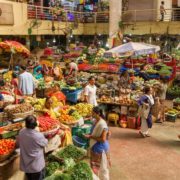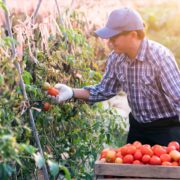Tag Archives | Dil Rahut
Governance and public sector management, Health, Poverty, Social development and protection
 Agriculture and natural resources, Governance and public sector management, Health, Poverty, Social development and protection
Agriculture and natural resources, Governance and public sector management, Health, Poverty, Social development and protection
 Climate change, Environment, Water
Climate change, Environment, Water
 Agriculture and natural resources, Economics
Agriculture and natural resources, Economics

Lessons for the informal sector from COVID-19
By Alessia Destefanis, Tetsushi Sonobe, Dil Rahut and Jeetendra Prakash Aryal. Posted August 13, 2021

The informal sector, which employs over 62% of the global population, is a fundamental source of livelihood for over 2 billion people (ILO 2020). Here, “employment” includes self-employment, and the informal sector refers to the part of the economy that is generally not monitored by a tax authority or other forms of government. Before the outbreak of the coronavirus disease (COVID-19), the informal sector accounted for 87.7%, 51.5%, and 55.7% of the population in low-, middle-, and high-income countries, respectively (ILO 2018a).
Rebooting food systems to achieve the unfinished agenda of global food security

Food insecurity continues to be a pressing issue worldwide, despite scientific innovation and technological advancements in agriculture. Therefore, food security continues to be at the center of the global development agenda. The burgeoning demand for food due to exponential growth in the world’s population and the mismatch between demand and supply due to factors such as climate change, loss of soil fertility, land degradation, water scarcity, food loss and waste, and inefficient distribution systems, have exacerbated the problem of food insecurity.
Climate change impacts in Asia are all essentially a water story

Global climate change caused by human activities will continue to be catastrophic for humanity. In particular, climate change is having serious impacts on the world’s water systems (United Nations 2020), and changes in these systems can have an enormous impact on people’s lives. This is because water plays a critical role in the very existence of all forms of life on earth as the foundation of human well-being and prosperity (Asian Development Bank 2020) and a source of life and livelihoods.
Transitioning to high-value agriculture through cluster-based development

Income growth, urbanization, nutritional awareness, and supermarket revolutions in Asia are fueling demand for high-value agricultural products (HVPs), such as vegetables and fruits. This change in consumer demand can provide new agri-food market opportunities, which in turn can contribute to numerous Sustainable Development Goals through increased rural income, rural livelihood improvement, and rural poverty reduction.


Search
Subscribe / Connect to Asia Pathways
Subjects
- Accelerating Progress in Gender Equality
- Addressing Remaining Poverty and Reducing Inequality
- Agriculture and natural resources
- Capacity development
- Climate change
- Economics
- Education
- Energy
- Environment
- Finance and Innovation
- Finance sector development
- Gender
- Globalization and Economic Stability
- Globalization, Environment, and Climate Change
- Governance and public sector management
- Health
- Human Capital Development for Inclusive Growth and Shared Prosperity
- Industry and trade
- Information and Communications Technology
- Infrastructure
- Making Cities More Livable
- Miscellaneous
- Population
- Poverty
- Private sector development
- Promoting Rural Development and Food Security
- Regional cooperation and integration
- Sanitation
- Social development and protection
- Strengthening Governance and Institutional Capacity
- Subjects
- Tackling Climate Change, Building Climate and Disaster Resilience, and Enhancing Environmental Sustainability
- Transport
- Uncategorized
- Urban development
- Video Blog
- Water
Recent Posts
- Preparing for LDC Graduation: Sustaining Development and Integration amid Changing Trade Schemes
- Facing the Heat: Addressing the Health Impacts of Extreme Temperatures
- Harnessing Energy Transition to Power Rural Development and Female Empowerment
- The Promise and Perils of Mother Tongue-Based Education
- From Crisis to Resilience: The Evolution of the Banking Sector in Asia and the Pacific




Recent Comments